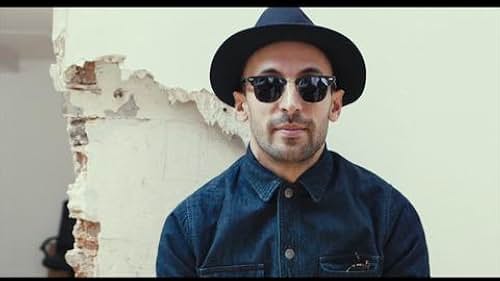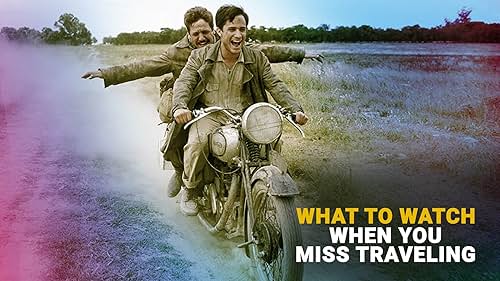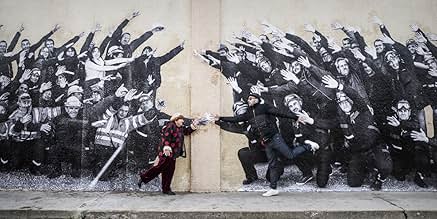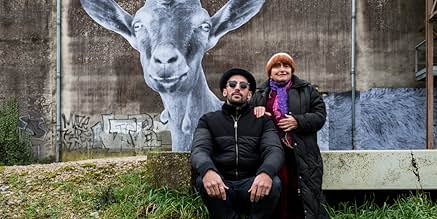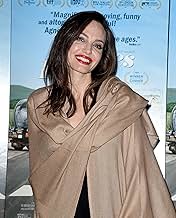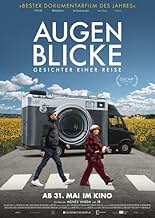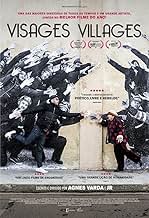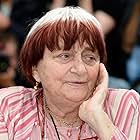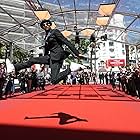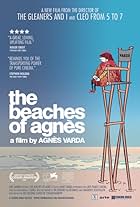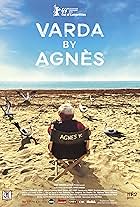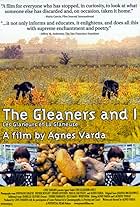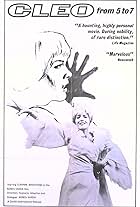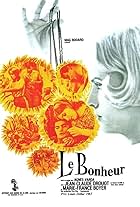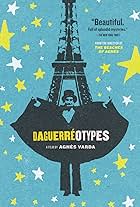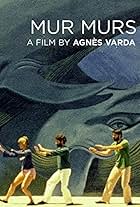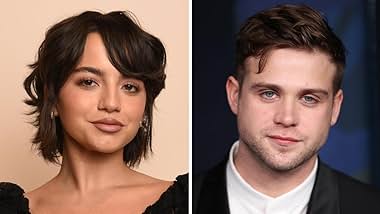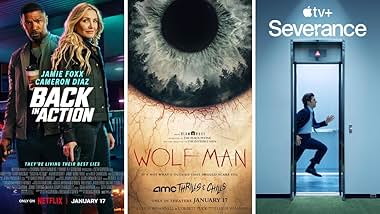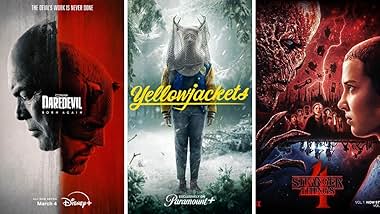Director Agnes Varda and photographer/muralist J.R. journey through rural France and form an unlikely friendship.Director Agnes Varda and photographer/muralist J.R. journey through rural France and form an unlikely friendship.Director Agnes Varda and photographer/muralist J.R. journey through rural France and form an unlikely friendship.
- Directors
- Writers
- Stars
- Nominated for 1 Oscar
- 36 wins & 41 nominations total
Pony-Soleil-Air-Sauvage-Nature
- Self
- (as Pony)
- Directors
- Writers
- All cast & crew
- Production, box office & more at IMDbPro
Storyline
Did you know
- TriviaWith her nomination for Best Documentary Feature at 89 years old, Agnès Varda becomes the oldest person nominated for any competitive Oscar.
- Quotes
Agnès Varda: [to JR after he takes off his sunglasses] I don't see you very well, but I see you.
- ConnectionsFeatured in The Oscars (2018)
- SoundtracksRing My Bell
Written by Frederick Knight (as Frederick Douglas Knight)
(C) Two Knight Publishing Co & Peermusic III Ltd
Performed by Anita Ward
Featured review
"Visages villages" (the English title is "Faces Places") is the last big screen film directed in 2017 by Agnès Varda in collaboration with photographer and mural artist JR. Until her death in 2019, she would make another TV movie dedicated to her own work and career. Maybe it was planned, maybe it wasn't, but the final two films form a duet. At the age of 89, "Visages villages" is an artistic end to her career as a director, while "Varda par Agnès" is the documentary finale, in which the director comments on her path in life and cinema. I dislike when movies are called "testaments". I guess Agnès Varda didn't like that label either. "Visages villages" is a beautiful film, a documentary that talks about France, its places and its people, but more than anything about the two filmmakers, one of whom is a little old lady, with failing eyesight and in need sometimes for a cane to walk, her hair dyed a little funny but sure like no other on the face of the planet, but certainly a lady who loved life, art and people and was determined to live intensely and create until her last breath. And so it was.
The film is a road movie with art and about art. JR invites Agnès Varda to a trip through the villages of France using his truck transformed into a photo studio and the production shop of huge posters based on the photos taken by the two. We are in the age of smartphones, but they still use the traditional Leika cameras. The posters are then glued to buildings, ruins, industrial structures, rocks, trains or trucks. Molded on the shapes of objects they begin a new double life - as structures or utility machines and as works of art. This original creative style practiced by JR meets the art of framing moving images whose master was Agnès Varda. The artistic effect is twofold. The black and white of the photos becomes an element in the color palette of Varda's images, who films with passion in open horizons reminiscent of 'Vagabond', one of her most beautiful films. The photographed characters enlarged at bigger-than-life sizes become giant witnesses of their own lives.
"Visages villages" is a special film in Agnès Varda's filmography, but also a continuation of some of the stylistic and social themes of her films, as well as of some biographical moments. The subjects photographed are, as in many of the previous films, people from 'Deep France' - a waitress at a bar, workers in the two shifts of a chemical plant, the last inhabitants of an abandoned mining settlement, a hornless goat breeder and a militant against cutting the horns of goats, the wives of unionized workers in the harbor of Le Havre. Some of the people and artists whose trajectories intersected with Agnes's life appear - in the image or in memory -: the photo of an old friend from his early youth will be pasted on a German bunker collapsed on a beach in Normandy, the two will visit the house of writer Nathalie Sarraute and the graves of photographer Henri Cartier-Bresson and his wife, and will set an appointment with Jean-Luc Godard. Eventually, Agnes herself and JR, her traveling and creative companion, become characters. We witness the developing friendship between them, their dialogues about art and the people who create it, about age and about death. "Visages villages" is a beautiful documentary and more than that. I think at the end of the filming JR was a little in love with Agnes. We too.
The film is a road movie with art and about art. JR invites Agnès Varda to a trip through the villages of France using his truck transformed into a photo studio and the production shop of huge posters based on the photos taken by the two. We are in the age of smartphones, but they still use the traditional Leika cameras. The posters are then glued to buildings, ruins, industrial structures, rocks, trains or trucks. Molded on the shapes of objects they begin a new double life - as structures or utility machines and as works of art. This original creative style practiced by JR meets the art of framing moving images whose master was Agnès Varda. The artistic effect is twofold. The black and white of the photos becomes an element in the color palette of Varda's images, who films with passion in open horizons reminiscent of 'Vagabond', one of her most beautiful films. The photographed characters enlarged at bigger-than-life sizes become giant witnesses of their own lives.
"Visages villages" is a special film in Agnès Varda's filmography, but also a continuation of some of the stylistic and social themes of her films, as well as of some biographical moments. The subjects photographed are, as in many of the previous films, people from 'Deep France' - a waitress at a bar, workers in the two shifts of a chemical plant, the last inhabitants of an abandoned mining settlement, a hornless goat breeder and a militant against cutting the horns of goats, the wives of unionized workers in the harbor of Le Havre. Some of the people and artists whose trajectories intersected with Agnes's life appear - in the image or in memory -: the photo of an old friend from his early youth will be pasted on a German bunker collapsed on a beach in Normandy, the two will visit the house of writer Nathalie Sarraute and the graves of photographer Henri Cartier-Bresson and his wife, and will set an appointment with Jean-Luc Godard. Eventually, Agnes herself and JR, her traveling and creative companion, become characters. We witness the developing friendship between them, their dialogues about art and the people who create it, about age and about death. "Visages villages" is a beautiful documentary and more than that. I think at the end of the filming JR was a little in love with Agnes. We too.
Helpful•20
- How long is Faces Places?Powered by Alexa
Details
- Release date
- Country of origin
- Official sites
- Language
- Also known as
- Faces, Places
- Filming locations
- Bruay-La-Buissière, Pas-de-Calais, France(miners' houses, Rue Desseilligny)
- Production companies
- See more company credits at IMDbPro
Box office
- Gross US & Canada
- $953,717
- Opening weekend US & Canada
- $31,006
- Oct 8, 2017
- Gross worldwide
- $3,996,577
- Runtime1 hour 34 minutes
- Color
- Aspect ratio
- 1.85 : 1
Contribute to this page
Suggest an edit or add missing content

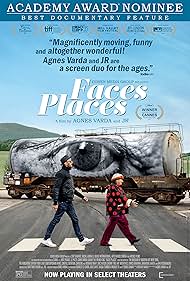
![Watch Bande-annonce [OV]](https://m.media-amazon.com/images/M/MV5BZjMwMjY3YzgtYTQwNi00OWMzLThmZjYtZDY2NmMzYTU3ZWU3XkEyXkFqcGdeQXRyYW5zY29kZS13b3JrZmxvdw@@._V1_QL75_UX500_CR0,0,500,281_.jpg)


